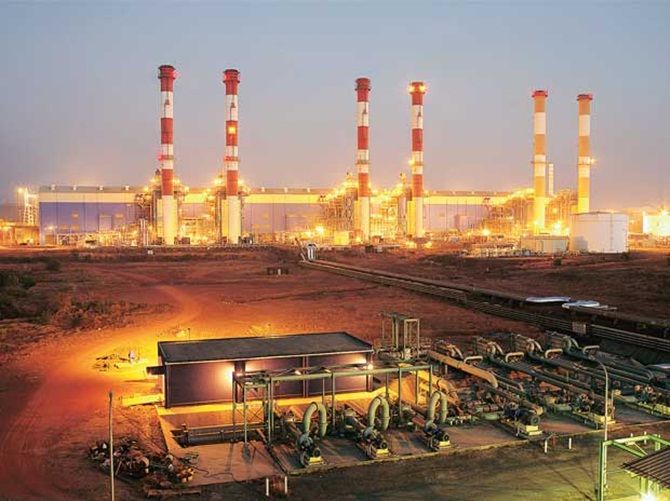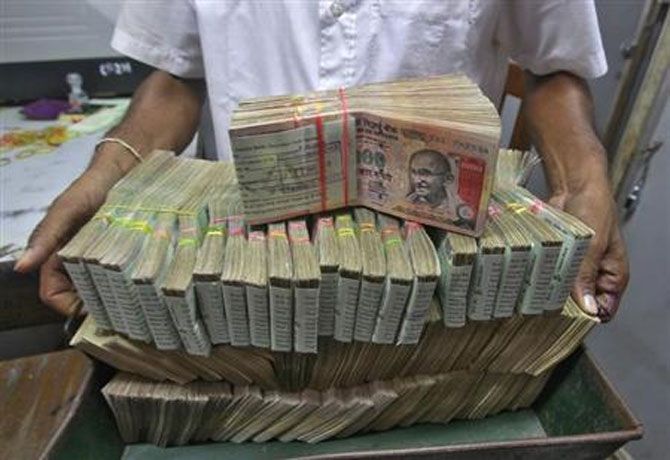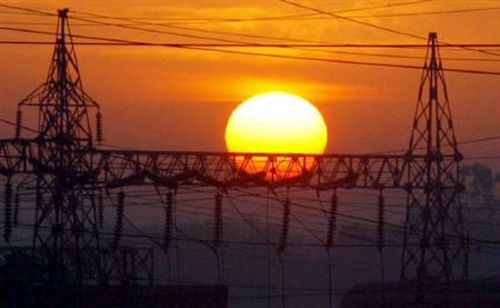Dabhol's assets will be demerged into the power plant and the LNG terminal.

Spread over some 1,700 acres in the Ratnagiri district of Maharashtra, the Dabhol power project has worked only intermittently ever since its American promoter, the erstwhile Enron Corporation, left it in a jam in 2001.
It has been in the custody of state-owned NTPC and GAIL (India) since 2005 when the United Progressive Alliance government decided to take over the project after long-drawn negotiations with the lenders.
Under a 25-year power purchase agreement, Maharashtra agreed to buy 95 per cent of Dabhol's power, Goa 1 per cent, Daman & Diu 2 per cent and Dadra Nagar Haveli another 2 per cent.
With 8.5 million standard cubic metres a day of gas from Reliance Industries' D6 field in the Krishna-Godavari basin, Dabhol was able to generate power at about Rs 3.5 a unit. It even made profit for three years starting 2009-10.
Trouble started from April 2013 when gas production from D6 began to dip and soon there was no domestic gas available. In December 2013, the power plant shut down.
There were consequences. "Since domestic gas wasn't available and power supply was erratic, we signed PPAs with other power generators," says a Maharashtra government official, ruling out the possibility of buying power from the Dabhol plant.
Both NTPC and GAIL, otherwise known for their project management skills, are now struggling to keep the project afloat through their joint venture, Ratnagiri Gas & Power.

Third innings
The revival of Dabhol is on the National Democratic Alliance government's agenda too.
Months after SBI Caps submitted a proposal to revive the project, all stakeholders sat down in the last week of September to consider its suggestions. Long negotiations, which at times extended till 3 AM, concluded only after Union Power Minister Piyush Goyal brokered a deal that was approved by Ratnagiri Gas & Power's board on September 30.
According to the new plan, Dabhol's assets will be demerged into the power plant and the LNG (liquefied natural gas) terminal.
A power purchase agreement for 500 Mw with the Indian Railways is also proposed, though it will light up only a fourth of the total capacity of 1967 Mw, that too for only two years.
Naturally, many feel this support won't be adequate.
"The Railway purchase is only a partial answer to the problem. Maharashtra should also come forward and buy power," says RV Shahi, former power secretary who was involved with the project's revival in 2005. "Another solution can be its operation during peak hours when higher prices would be acceptable to the buyers.''
It is learnt that Telangana, which has a serious power deficit, was keen to buy power from the plant but the lack of transmission link kept it from doing so.
The PPA with the Railways is contingent on keeping the cost of power at Rs 4.7 per unit (kw/hour). And, to do this, all stakeholders will need to take a haircut.

Cost of revival
Dabhol recently secured 1.98 million standard cubic metre per day imported gas under the Union government's scheme for stranded gas-based power projects. Subsidy in the range of Rs 1.30-1.40 a unit will be made available from the government's Power System Development Fund, though this arrangement will end with the scheme in March 2017.
Since the Railways will be drawing power in Maharashtra, West Bengal, Jharkhand and Gujarat, these states will waive transmission charges. Besides, Maharashtra will also exempt gas sales from value added tax. GAIL that sells gas to Dabhol will take a 75 per cent cut in its marketing margin.
Still, keeping power cost down might not be feasible over the long term. At the moment, this is possible since imported gas prices are low. Once it goes up, the strain will begin to tell.
"A glance through the Central Electricity Regulatory Commission's Power Market Report for last two years shows that the cost of Dabhol's power is twice that of the market rate. Instead of resorting to financial engineering and a piecemeal approach for individual projects, a holistic view of the power sector is needed," says Maharashtra Electricity Regulatory Commission's former member Jayant Deo.

Burden on banks
The lenders too will have to contribute. Dabhol has a debt of about Rs 7,800 crore, with IDBI Bank having the largest exposure of about Rs 2,000 crore, followed by State Bank of India (Rs 1,750 crore) and ICICI Bank ( Rs 1,250-1,500 crore).
Under the proposed revival plan, the consortium of lenders will waive off Rs 2,500 crore over five years in case the power plant does not reach profitability.
The lenders have already converted Rs 855 crore (Rs 8.55 billion) of debt into equity in two tranches this year. From an initial shareholding of 16.86 per cent, they now hold 35.47 per cent equity in Dabhol.
The lenders are also seeking the Reserve Bank of India's permission to bring the project under 5/25 scheme which will enable them to have longer amortisation of 25 years with refinancing option every five years.

Unlocking value
The last piece of the revival plan is the demerger of the power plant and the LNG terminal.
Last year, 30 cargoes were to be handled at the regasification terminal that has an imposing presence in the picturesque Ranui village along the coast. But only 10 cargoes were received since the demand from the power plant was nil.
While the LNG terminal was built essentially to cater to the power plant, its capacity was designed to import more gas and market it to other players as well. But during June to September, it cannot be operated. In fact, out of its three cryogenic gas tanks of 160,000 cubic metre capacity, one is lying unused.
At 30-35 per cent capacity utilisation, the terminal is not viable.
"About Rs 2,000 crore (Rs 20 billion) is needed to construct breakwaters and other infrastructure so that it can function even in monsoon months. The joint entity could not have serviced the loan, therefore, on the insistence of the lenders, the demerger has been envisaged," says a senior Ratnagiri Gas & Power executive.
SBI Managing Director Rajnish Kumar says with the splitting of the project, the LNG terminal capacity can be fully utilised. Kumar's optimism will, however, depend on the non-power plant gas sales which GAIL will have to market to make the terminal viable.
Dramatis Personae

Rebacca Mark-Jusbasche
Mark-Jusbasche, chairman and CEO of Enron, became the glamorous face of foreign investors when she lobbied for the $3-billion power plant in Dabhol.
When the project was scrapped by the Maharashtra government in 1995, she was able to get fresh terms for the power plant after a famous meeting with Shiv Sena chief Bal Thackeray.
She is now the chairman of Dredgit Environmental, a water solutions company.

Sanjay Bhatnagar
Sanjay Bhatnagar, the high-flying Harvard graduate, headed the South Asia operations of Enron. Known for his charming style, it was under his supervision that the Dabhol plant was negotiated.
He went back to the US after the collapse of Enron, and set up THOT Capital, a private equity firm, besides taking over as the CEO of WaterHealth International, a water purification solutions provider.

Sharad Pawar
Sharad Pawar was the Maharashtra chief minister when the state signed an agreement with Enron in 1992 for setting up the power plant under an MoU immediately after the Congress government under Narasimha Rao opened up the power sector to private participation.
Later in 2001, Pawar said his party would pull out of the ruling coalition if a judicial probe was ordered into the controversial project.

Gopinath Munde
Gopinath Munde, Maharashtra’s deputy chief minister in the Shiv Sena government in 1995, presided over a committee that recommended scrapping of the project. "We will throw Enron into the Arabian Sea," he famously said.
The committee examined issues related to corruption, namely the lack of competitive bidding. But by November 1995, a renegotiation group reworked the terms of the project.

Madhav Godbole
Madhav Godbole, a Maharashtra cadre IAS officer, resigned as home secretary to the government of India in 1993 after being caught in the crossfire between Cabinet minister SB Chavan and minister of state Rajesh Pilot.
In 2001, he headed a government committee that criticised the renegotiated terms for the power plant and recommended a judicial inquiry to fix administrative and political accountability for the lapses.










 © 2025
© 2025